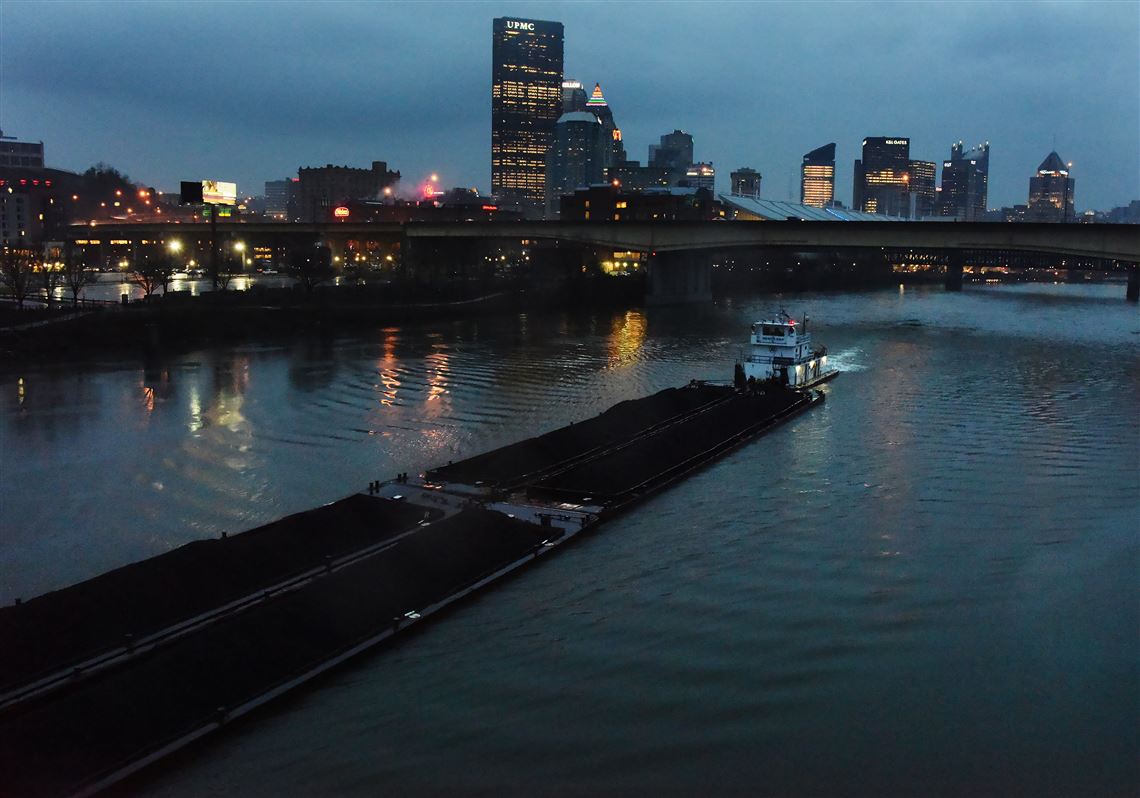Fifteen years or so ago, Lenna Hawkins used to get much less guidance from the U.S. Army Corps of Engineers Washington, D.C., headquarters about how to prepare the budget request for the Corps’ Pittsburgh district.
Today, the guidance is a stack of papers about 4 inches thick.
If only the Corps’ budget had grown half as much over the same period.
Instead, the agency’s national budget has consistently been about $5 billion, according to Ms. Hawkins, deputy district engineer. There have been some exceptions, such as President Barack Obama’s $787 billion stimulus package, approved by Congress in 2009 to help the nation recover from the Great Recession.
Ms. Hawkins said the budget guidance has grown because in an age of stable funding and aging infrastructure, the Corps must gather more information about the condition of locks, dams, reservoirs and other infrastructure it maintains, and ensure that the limited funding targets the right priorities.
“The funding is getting tighter as our facilities get older,” she said.
Another complication is that during Ms. Hawkins’ 30 years with the Corps, Congress has rarely approved a budget by Oct. 1, the start of the government’s fiscal year.
That was true again this fiscal year, leaving the Pittsburgh office with 27 pages of guidance on how to go about its mission while Congress made up its mind about how much to spend.
Of the $213.2 million Congress appropriated for the Pittsburgh office for fiscal 2016, $73.7 million went to take care of the 23 sets of locks and dams on the Allegheny, Monongahela and Ohio rivers. Barges carrying about 31 million tons of coal, petroleum and other products move through the locks each year, as well as thousands of recreational boats.
“We have more locks and dams than any other Corps district,” Ms. Hawkins said.
They are also some of the oldest. The dam on the Mon River at Elizabeth went into service in 1907. Although temporary repairs were made in 2006 and 2008, the Corps believes there is a very high risk the dam could fail. That would halt river traffic and jeopardize consumers and businesses who rely on the river for water.
The Elizabeth dam is slated to be eliminated as part of a $750 million plan authorized by Congress in 1992 to replace the locks and dams at Braddock, Elizabeth and Charleroi by 2004.
However, in addition to authorizing the plan, Congress has to appropriate money for it. That’s why Corps officials like to point out that it takes two acts of Congress to get anything accomplished.
The Lower Mon Project, like many other Corps projects authorized by Congress, has never received the funding needed to complete the work. In fiscal 2016, Congress appropriated $29.45 million for the project, which was matched by $29.45 million from a diesel tax barge operators pay to support major water infrastructure projects.
A halting flow of funding has left the Lower Mon project behind schedule and over budget.
Corps officials said if the project is efficiently funded, a new lock under construction at Charleroi could be completed in late 2022. The total project is expected to cost $2.7 billion, but Corps officials said more than 90 percent of the benefits could be achieved by eliminating construction of a second lock and not relocating a nearby railroad bridge. They say that would reduce the cost to $1.2 billion.
“The Low Mon project is a challenge,” Ms. Hawkins said.
Meanwhile, the Corps continues the costly job of operating and maintaining a dam slated for the graveyard. The fiscal year 2016 appropriation included $1.8 million for the Elizabeth dam.
A dam at risk; a nuclear waste site
River navigation is only one of the jobs assigned to the Corps. The agency’s district office also oversees 16 reservoirs used for flood control and recreation, receiving $25.4 million for the work in fiscal 2016. One of those reservoirs is created by the East Branch Dam in Elk County. The earthen dam controls flooding on the Clarion River, promotes water quality, and preserves fish and wildlife.
The Corps found signs in 1957, shortly after the dam was built, that the interior could be eroding. The agency now monitors the dam around the clock even as it builds a 2,300-foot concrete wall within the dam to secure it.
A $132.5 million contract for the work was awarded in 2014. Congress gave the Corps $40.7 million for the project in fiscal 2016. Construction of the wall could start later this year, Corps officials said.
The Pittsburgh office also oversees the largest environmental cleanup site funded by a program Congress established in 1997.
The project, known as the Shallow Land Disposal Area, involves a 44-acre Armstrong County nuclear waste dump that contains dangerous weapons-grade uranium and plutonium.
It is the site of a former plant that made fuel for commercial nuclear power plants and nuclear submarines. Late U.S. Rep. John Murtha, D-Johnstown, persuaded Congress to give the Corps responsibility for the cleanup because constituents were concerned about the progress of talks between the operator and the Nuclear Regulatory Commission.
Corps officials had to stop removing the waste in 2012 after they discovered the material posed a greater danger than previously thought.
The agency is now reviewing bids to safely remove the waste and could award a contract this year. The winning bidder will work with the Corps to develop plans for how to perform the work, a process officials expect will take a year. After that, the contractor will begin excavating the waste.
Since Congress assigned the responsibility for the Armstrong County project and 23 other hazardous waste sites in 10 states, it has appropriated between $100 million and $140 million annually for the work. In fiscal 2016, the Corps received $112 million for all of the projects.
Looking for partners
Given perennial funding shortages, Congress has given the Corps the authority to pursue public-private partnerships.
The Pittsburgh office is involved with two private groups that provide funding for the Corps to operate the locks on the upper Allegheny and Mon rivers during the summer months for recreational boats. The private groups see it as a way to preserve land values and boost the riverfront economy.
“They’ve done a great job of pulling people together,” Ms. Hawkins said of the business groups that organized the partnerships.
Len Boselovic: lboselovic@post-gazette.com or 412-263-1941.
First Published: May 8, 2017, 4:00 a.m.
















